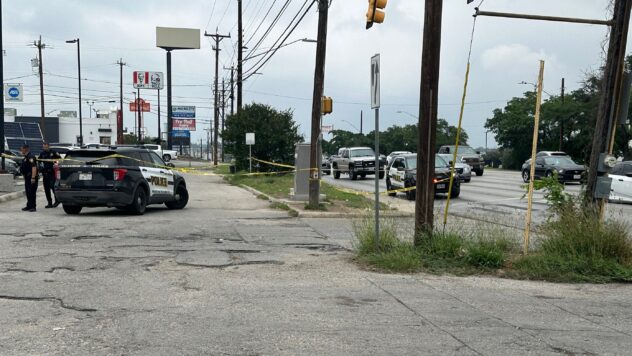How Austin airport and TSA plan for upcoming SXSW, COTA chaos

Last March, Austin-Bergstrom International Airport made international headlines, and not the good kind. Reports of people abandoning rental cars, security lines snaking outside the Barbara Jordan Terminal, and many missing flights or connections abounded, with shocking photos and video to back it all up. The event raised questions about the airport — mainly, was it ready for primetime? And if not, how could the city make it so?
Though there hasn’t been another day quite like that Monday, the airport regularly smashed its records for daily and monthly visitors, eventually breaking its own record to make 2022 the busiest year on record for ABIA, with 21,089,289 passengers, a 55.4% increase over 2021.
As the one-year anniversary of the “airport apocalypse” approaches, MySA spoke with representatives from the airport and the Transportation Security Administration to see how — and if — this type of nightmare can be avoided in Austin in 2023.
Operational Efficiency
Austin-Bergstrom looks at preventing chaos like March as two issues: operations and improvements.
From the operational side, there are some immediate fixes, says Sam Haynes, acting public relations, community engagement, and marketing manager at ABIA. Those include increasing staffing, both at the airport level and with TSA, who sent additional officers after the fiasco in March, and rearranging queuing lines.
The airport also added a necessary hub as a response to record-breaking days and weekends, one it can operate independently of other agencies.
Last spring, ABIA introduced its Operations Center, an all-hands-on-deck activation the airport can proactively initiate when it anticipates chaos. The airport has been operating the center not just for emergencies or weather, but in advance of major travel events like SXSW, Formula One, ACL, and holidays like Thanksgiving and Christmas, which saw record travel in 2022.
“That’s essentially a miniature emergency operations center, but instead of [being at] the city-county coordination level, it’s just at the airport level,” Haynes says.
A power outage is impossible to predict, as it was last September, but a power outage during, say, SXSW would be catastrophic for air travel. Under the new system, a larger number of airport operations employees together in one room should enable the airport to snap into action more quickly, should the rental car fiasco happen again during a record-breaking morning.
But as ABIA prepares for a busy few weeks, it’ll do so without its CEO. On Wednesday, Jacqueline Yaft, who joined as chief executive in 2019, resigned.
“In her time at AUS, Ms. Yaft led the airport’s COVID-19 response, launched our Airport Expansion and Development Program, and was instrumental in the airport securing new airlines and nonstop flights. We thank her for her service to our airport and our city,” a statement from ABIA reads.
Jim Smith, CEO of ABIA from 2000 until 2019, is returning in an interim executive director role to lead the transition, beginning Monday, March 6. If 2022 was any indication, Smith will have his work cut out for him.
The Barbara Jordan Terminal at ABIA at night.
Dave Wilson
Staying Alert
Patricia Mancha, the TSA’s Southwestern regional spokesperson, says that the pandemic didn’t necessarily make people forget how to be a good traveler, but that in general, people need to be more attentive when they fly. A main issue: firearms.
In January, MySA reported on the record-breaking year ABIA had in the way of 150 firearms found in carry-ons and undeclared in checked luggage.
“Right now in Austin, as of yesterday, there were a dozen guns that had been found,” Mancha says. “And, you know, we’re not even through February.”
Every time a gun is found by TSA, the checkpoint is halted, police are called, and everyone else behind the gun-owner is either made to wait or diverted into another line, which can cause bottlenecking. Last year, this happened at a rate of almost three times each week.
“For a busy checkpoint like Austin, do you want to be one of those people that holds up everybody else?” Mancha asks, rhetorically.
The worst offender at security, though, is much more innocuous-seeming: water bottles. Mancha says it is the most common prohibited item found at TSA.
“A bottle of water is found in at least four out of 10 travelers’ carry-on bags,” she says, despite rules limiting travelers to less than 3.4 ounces of liquid being in place since 2006.
It seems like a small deal, but that adds up. By the TSA’s count, 8,435,715 people forgot a water bottle in their bags in Austin alone, causing a slowdown at security each time.
Mancha points to a few other reasons that ABIA has been busier than normal — it’s a commuter airport that services a large area in Central Texas and sometimes San Antonio, and the city keeps adding and enlarging its events — but that overall, airports are busy across the country.
That means those two hour recommendations — sometimes longer — to arrive at any airport before departure are here to stay.
And during large events? A place like Austin will always be busy. The TSA works in conjunction with ABIA to staff up during predicted busier times in two ways: temporarily adding local agents to the workforce surrounding events and, if needed, bringing in reinforcements from other areas.

ABIA will expand its concourse to add at least 10 gates — but there’s no exact timeline for construction.
Austin-Bergstrom International Airport
Home Improvement
The real, longstanding changes will come with ABIA’s other method for fixing capacity issues: construction.
“The big thing everyone wants to know, of course, is the midfield concourse,” Haynes says.
A main component of ABIA’s ambitious 2040 Airport Master Plan, the elusive midfield concourse will have a minimum of 10 extra gates, for starters. A number as high as 20 has been floated but design hasn’t even begun yet, according to Haynes.
In the meantime, the $165 million West Side Expansion is set to break ground this spring, which will bring 30,000 additional square feet of space and will include more restrooms, a new restaurant, a new shop, a new airport lounge, and three new gates. But they aren’t three net gates; ABIA will have to take three gates offline in order to construct the tunnel to the midfield concourse.
It’s baby steps — at least in terms of a major international airport — for now. Additional improvements meant to offset the capacity issues include a new baggage handling system that will expand TSA Checkpoint 3 and an atrium infill to add unused square footage above baggage claim to expand passenger processing. The latter is still in pre-design.
While TSA and the airport can’t make any promises about what 2023 will bring, especially at the confluence of SXSW, Circuit of the Americas events, and Dell Match play in March, Haynes says the staff is optimistic.
Being able to add more staff, including creating new positions, has been helpful, as have collaborations with the TSA to get extra deployment during busier times. Even the rental car companies have tried safeguarding another viral moment by staffing up since March.
Haynes says that — fingers crossed — so far, March 28, 2022, was just a blip on the radar.
“We thankfully have not had another viral moment like that,” she says, “and we hope not to.”

























